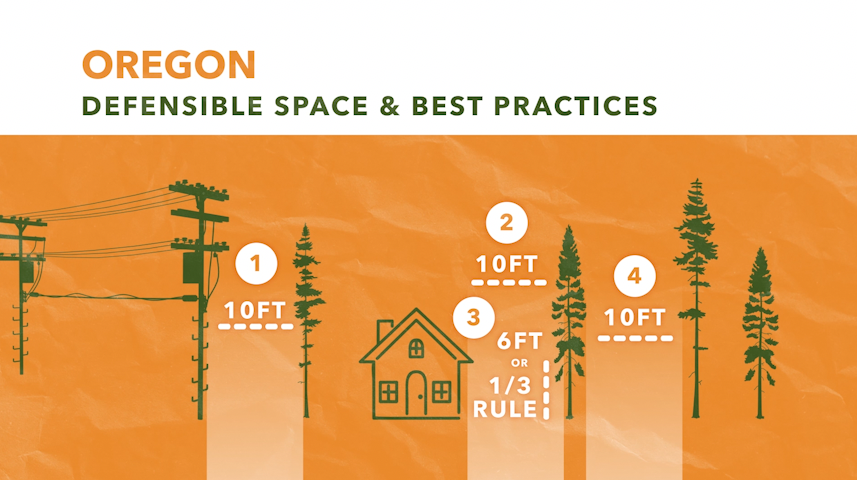Oregon State Fire Marshal representative talks about defensible space in Central Oregon as wildfire season peaks
(Update: Adding video, comments from the assistant chief deputy, Bend resident)
BEND, Ore. (KTVZ) -- Wildfires can pose a big risk to us here in Central Oregon. It's important to create a defensible space for your home or business. A defensible space is a buffer you can create between your home and grass, trees, or shrubs.
The assistant chief deputy in the State Fire Marshal's Office was in Bend Wednesday and walked us through the process.
"We are talking about moving wood piles away from houses, making sure your gutters are clean, free of debris like pine needles, things of that sort," Chad Hawkins said.
The Oregon State Fire Marshal wants to help all home and property owners create a defensible space.
It's treatments in the 100-foot area around structures to reduce the impact of wildfires.
Bend resident David Newbold said, "It's a concern. I mean, with all the smoke, you know, it's a real reminder that that that we live in a place that could burn."
In August this year there have been more than 1,000 fires.
Newbold makes sure to stay alert during fire season.
"I try to cut any branches that are within four or five feet of the ground, and break up pine needles and pine cones," he said. "Keep them out of the way, because they will combust if it gets hot enough. And i water my lawn, and I cut my grass."
Trees and vegetation should be kept 10 feet from power lines, buildings and chimneys, and for trees and vegetation more than 18 feet tall, remove branches six feet from the ground. Trees and vegetation should be at least 10 feet from other trees.

The Oregon State Fire Marshal is now helping out property owners by offering free defensible space assessments.
If you request the assessment on the Oregon State Fire Marshal website, a fire service professional or a deputy state fire marshal will come to your house to discuss tips and provide you with a check list.
Hawkins looked over an example landscape and said, "Looking here on the ground, we've got a lot of dead grass, we've got a lot of, again, dying very fine debris. And as we transition, we start getting into our heavier fuel loads. We have vegetation, we have some manzanita here, we have a couple of other bushes, and then it transitions to an actual tree itself. When we're talking about the removal of ladder fuels. those are the types of things we want to mitigate."